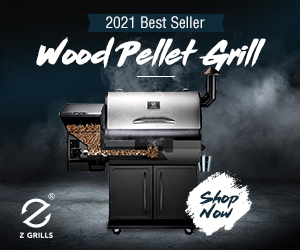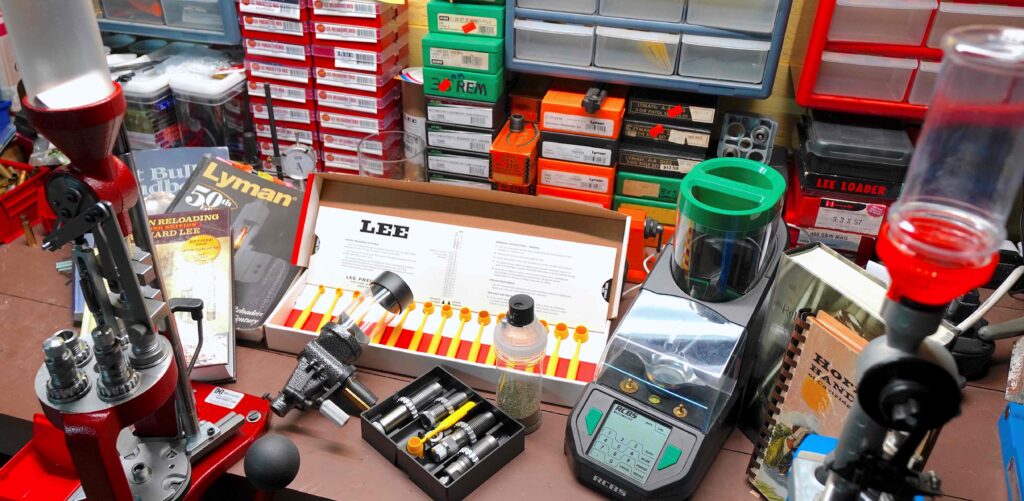
When it comes to reloading in general there are a few cardinal rules that all new reloaders are constantly reminded of. One of those is keeping the powder charge at, or below, reload data available. There are some variations in each book depending on the specific company providing the load data, but overall, there is little variation. Individuals who don’t pay attention to this rule end up paying the price in steel or blood.
Powder measuring has come a long way since reloading data first began being published. And when smokeless was in its infancy, it was very easy to see how mistakes could happen. Compared to black powder, which is a compressed load, compressing and overcharging a case with smokeless powder inevitably ends in disaster. And at that time, common cartridges were often fired using smokeless or black powders. 45 Colt, 30/30, 44/40, etc were some of the earliest commercial cartridges to feature both types of power. Since then, the need for accurate measurement of smokeless powder has been a priority.
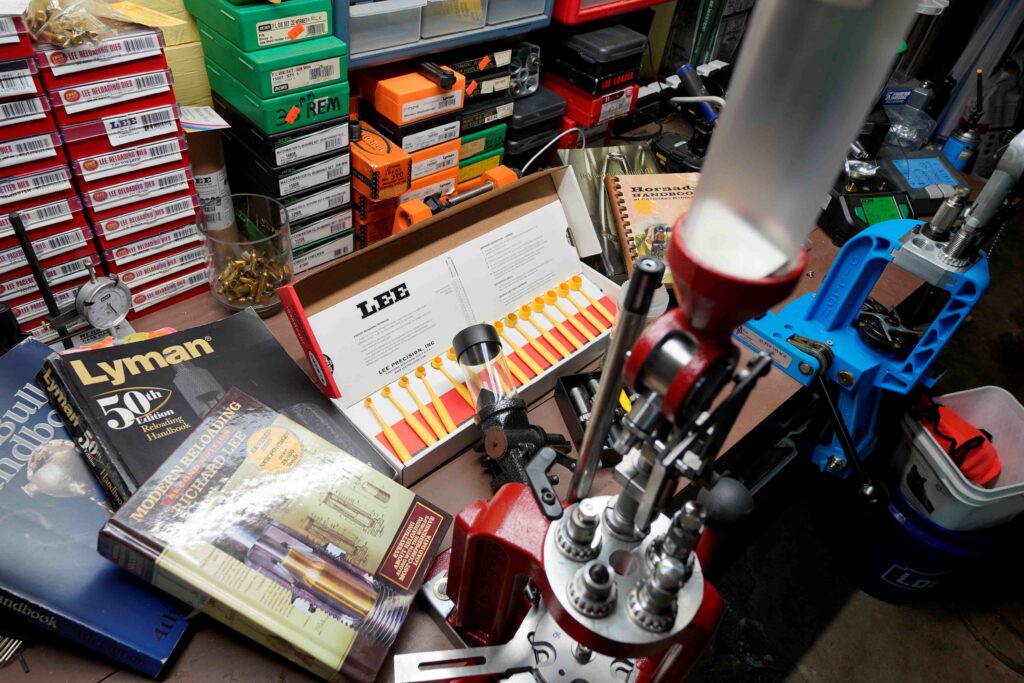
From on press to capacity measurement, measuring powder can be relatively simple.
So, what required the change?
The pressures produced by black powder are quite low compared to smokeless cartridges. During the introduction of smokeless powder, metallurgy was going through major changes which began slowing in the 70s. However, it wasn’t until the 1920’s when various steels became affordable and easy to produce. Once these stronger metals became commonplace, they quickly found their way into firearms manufacturing and, in turn, faster calibers were produced pushing the boundaries of the newer materials. Going over recommended powder charge can still cause steel to fracture and break.
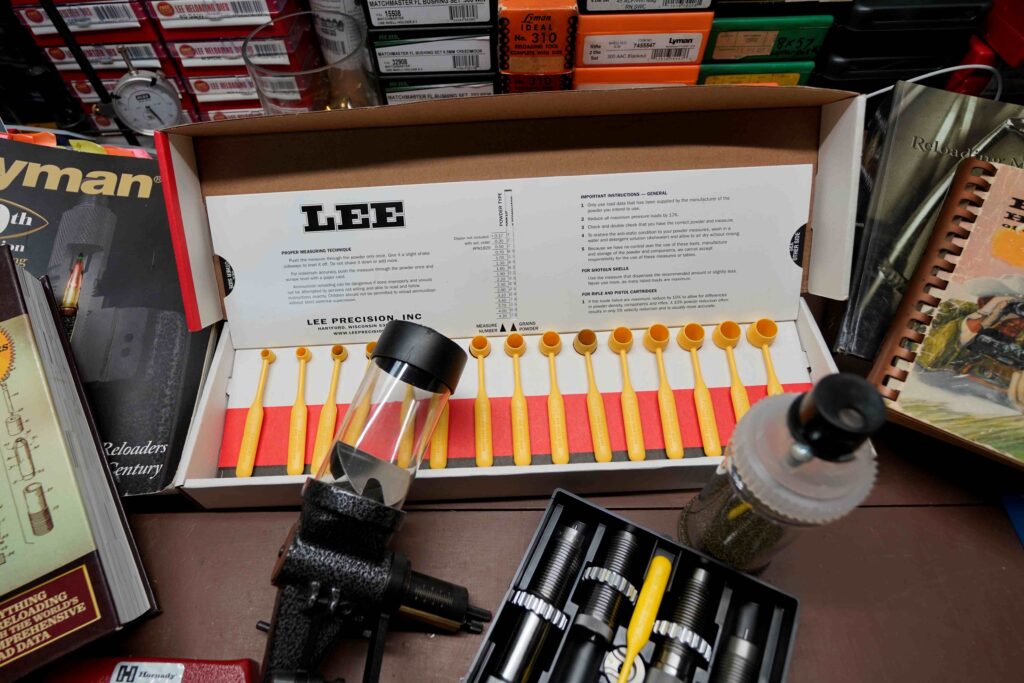
Lee’s scoops convert grain weight to CC’s and vic versa for an accurate powder charge.
Can reloaders guarantee powder charge?
In short, yes. While there is no ‘one’ set way to reload, each situation has benefits. Every shooter has a niche or two they neatly fall into. Powder – and projectiles – are the core of these niches. There are quite a few of these niches. Let’s look at a few fundamental architypes through personal observations.
- Casual Reloading
As a writer, I’d dare say the bulk of questions and outreach I get are from casual reloaders. Individuals who just want to know the skill and play safe fall into this category. There is not much in the way of fancy tooling or powders, but it’s an economic way to save ammunition during election season. It’s simple and fun, usually focused on common calibers.
- Range Reloading
These often comprise the individuals on the range practicing for an upcoming competition or just trying to save money while being deeply committed to their shooting habits. While there may be a more comprehensive selection of tools and powders on their bench, loads are still firmly set in the middle of the overall data. Like with Casual Reloading, the calibers are relatively common.
- Antique Reloading
Antique reloaders remain a unique group and one I am drawn towards. Antique doesn’t necessarily mean pre-1899 firearms as federally defined. Moreso, older and uncommon calibers that saw their heyday decades or even a century ago. These can range from cowboy loads to early military cartridges. Preservation of a firearm or cartridge is key. Loads appear to be on the lower end, but that’s not a hard rule as many want to appreciate the full potential of these calibers.
- Precision Reloading
I personally love precision reloading. It’s tedious and often boring, but consistent. There is little to no room for any sort of deviation. It all boils down to consistency to the highest degree. These types of loads are frequently encountered with long-range shooters or those who want to push their reloading to the next level. There are many specialty tools just for this type of shooter.
- Experimental/Wildcat Reloading
Without wildcats there would not be many commonplace calibers we have today. Elmer Kieth is one of the biggest names in reloading and it’s because of his wildcat cartridges we have 44 and 357 magnums. This type of reloading has many specialized tools with a wide range of powders and projectiles. Wildcat and experimental reloading has no guidebook and should not be attempted by anyone but the most experienced reloaders.
- Oddball Reloading
Many cartridges are not produced any longer, but the firearms may be easy to find and relatively inexpensive. The VZ52 rifle in 762×45 is a good example of this. Purists and collectors love the rifle and want to keep it unadulterated. The only solution is to reload.
- Savings Reloading
Many say they got into it to save money. While that’s rarely the case, it does happen. These are the individuals who pick up every piece of orphaned brass at a range, buy every old bottle of powder, or even buy in bulk just to save money on ammunition. There are tools to help speed up the process, but it’s not necessary and cuts into the bottom line. Time is the main caveat to save money with reloading.
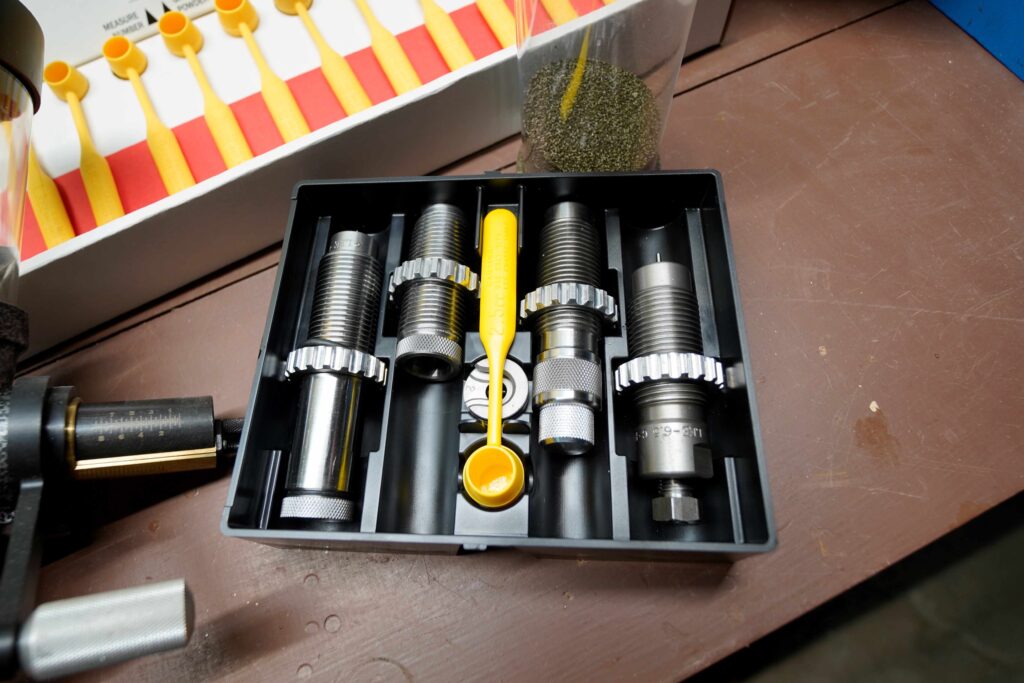
Nearly all of Lee’s die sets come standard with a powder scoop.
What does this suggest for powder charges?
Quite a bit. The type of reloading being performed may require more precise powder measurements. Plinking or basic target practice allow for slight variations from one piece of ammunition to the next. However, precision reloading needs the exact same grain weight down to the hundredth or thousandth to achieve the same velocity or point of impact. Which brings me to my main point; what are the ways to measure powder charges?
Ways to measure powder charges:
When I first started reloading, nearly 20 years ago, I was gifted a used pistol case that had the exact volumetric grain measurement for a specific powder. This is a carryover from black powder measures. While that worked then, it’s never to recommend. However, Lee Precision took that idea and ran with it. They produced a powder scoop – dipper – kit which includes graduated scoopers from 0.3cc to 4.3cc. To this day, most of their die sets come with a conversion for common powders and the equivalent scoop. Measurements for a proper charge – depending on caliber – are included.
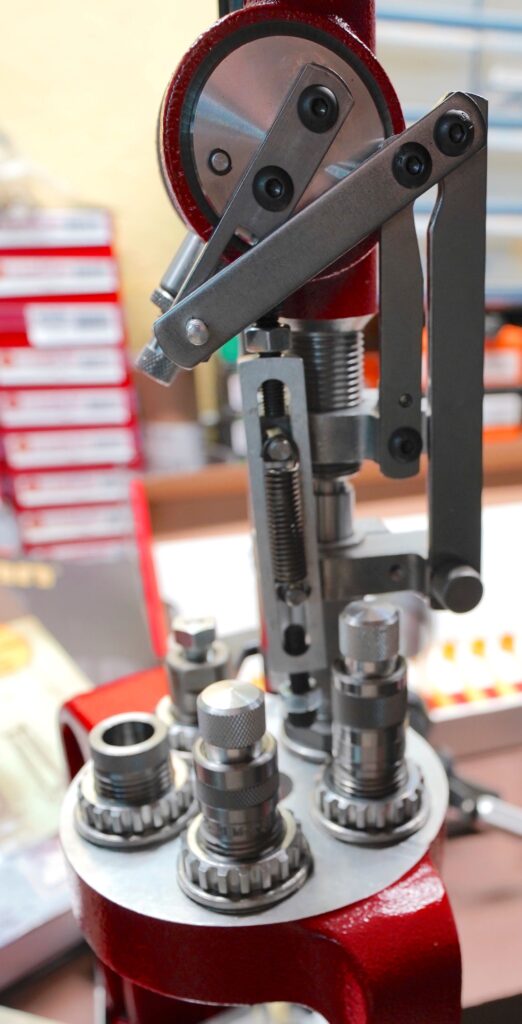
Many press mounted droppers, like the Hornady Lock-N-Load, are case actuated and will only dispense powder when a case is present.
A more precise form of measuring is a calibrated scale. There are two types; mechanical and digital. Both serve identical functions. A user would set powder into a pan and accurately measure the weight. This can become quite frustrating when adding too much powder. Practically every reloading company promotes something within this category. Lee has their powder handling scale while Lyman has a Micro-Touch 1500 electronic scale.
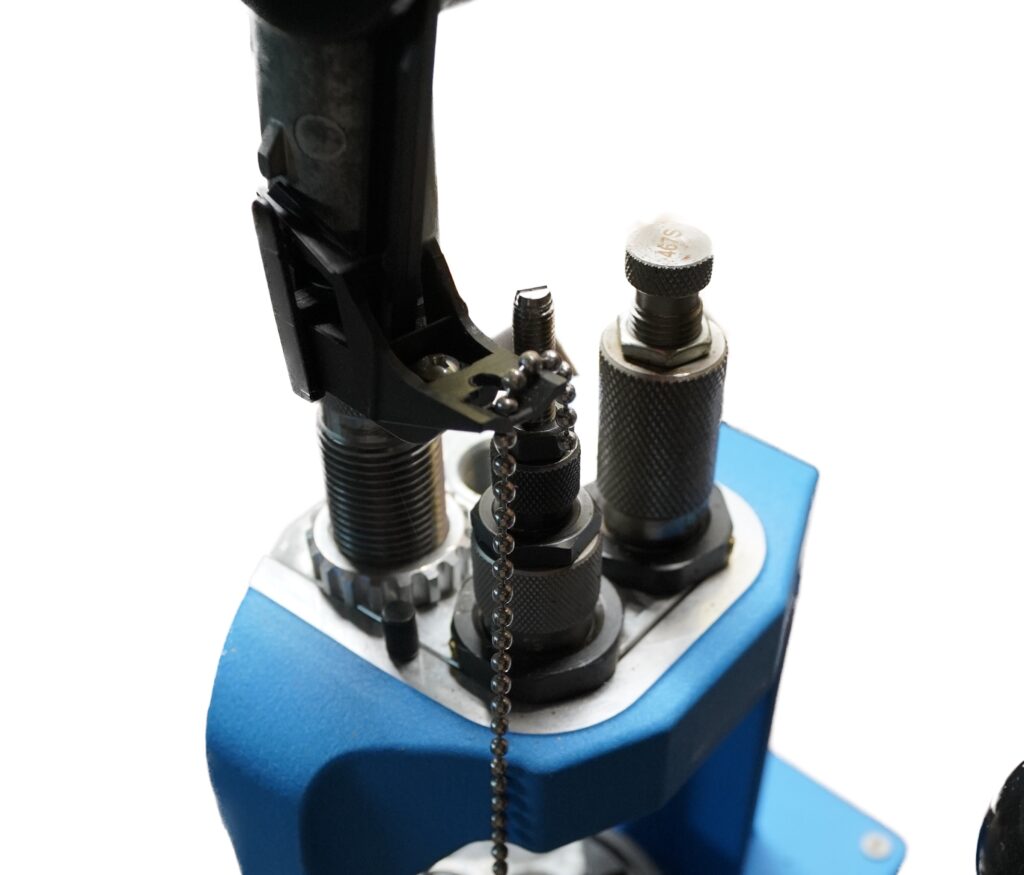
When connecting varying brands of powder drops to a press, it may be necessary to configure specialized resets.
With the invention of the turret and progressive presses came on and off press powder drops. There are free-standing models. The powder is measured and set to consistently drop the same amount of powder every single time. They can become quite difficult to initially set up and require some type of calibrated scale to check consistency. Also, different powder types – flake, pellet, ball, multi-base – often lead to constant adjustment. They also have some drawbacks as many have settings which can ‘travel’. More recently, Lee developed the Auto-Drum (a model that has a quick-change powder bottle system) which appeared more accurate of hundreds of reloads than their Pro Auto-Disk; according to anecdotal accounts. RCBS produced the Uniflow, Hornady manufactures their own Lock-N-Load Powder Measure and Lyman offers the Brass-Smith. Keep in mind, powder measures attached to presses may be case actuated saving a lot of time. If you find a press mounted dropper you like, it may be possible to make powder drop fit a press manufactured by a company different than the dropper manufacturer.
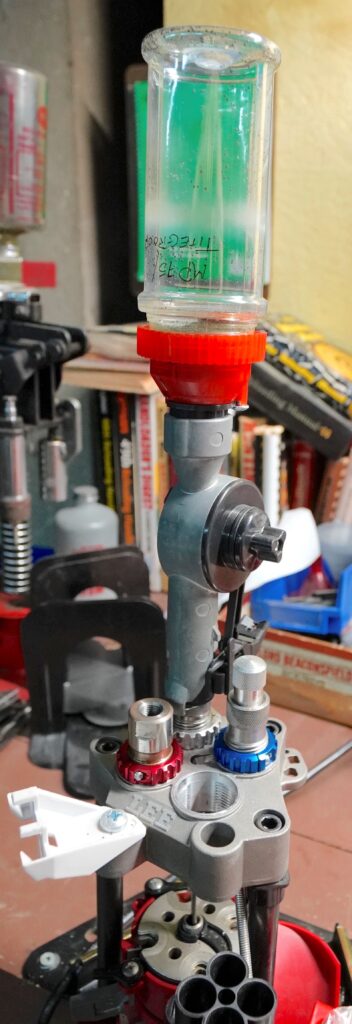
The Auto Drum is one of the most reliable and easy to adjust powder drops from Lee Precision.
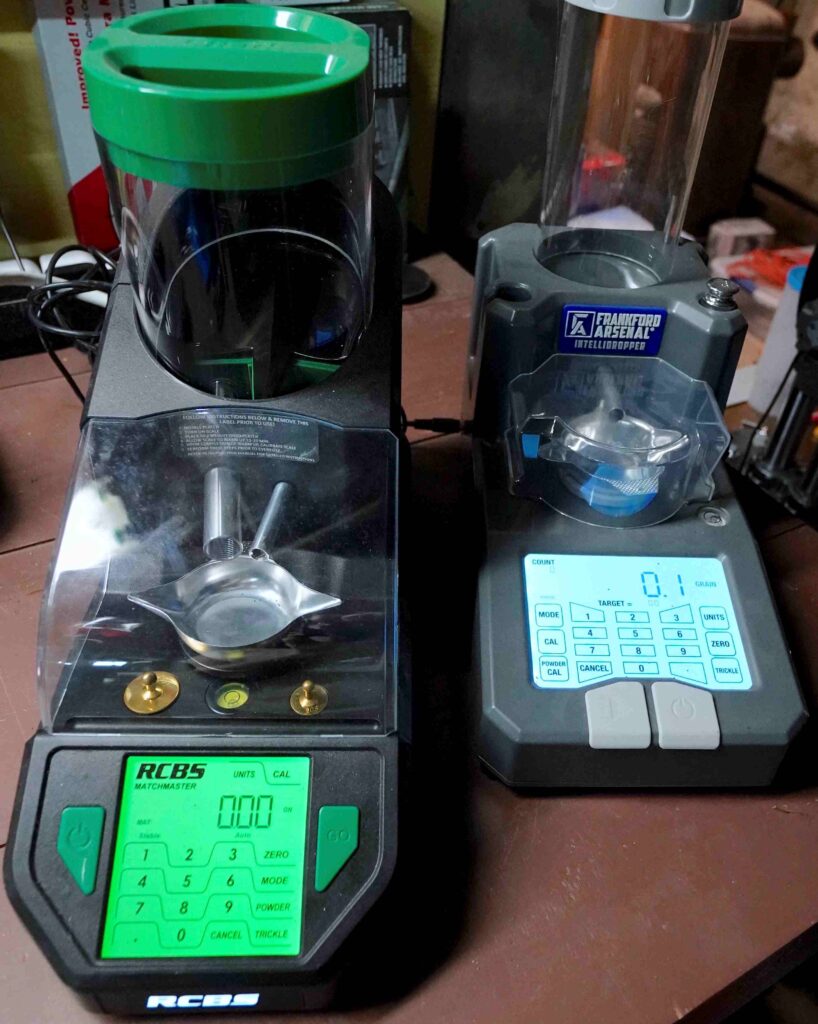
Advanced powder droppers combine automatic dispensing with a digital scale. Notice the variation of accuracy between brands from hundredths and thousandths of a grain.
One of the more recent items in reloading is the Digital Automatic Powder Scale. There are varying degrees of precision up to 0.10 grain accuracy and dispenses the powder into a scale cup automatically with the push of a button. It combines the accuracy of a digital scale with the convenience of a bench mounted powder drop. They range wildly in price from $899 for an RCBS Matchmaster and even $240 for a Frankford Arsenal Intellidropper. Both casual reloaders and precision reloaders utilize the versatility and accuracy of these automatic digital scales.
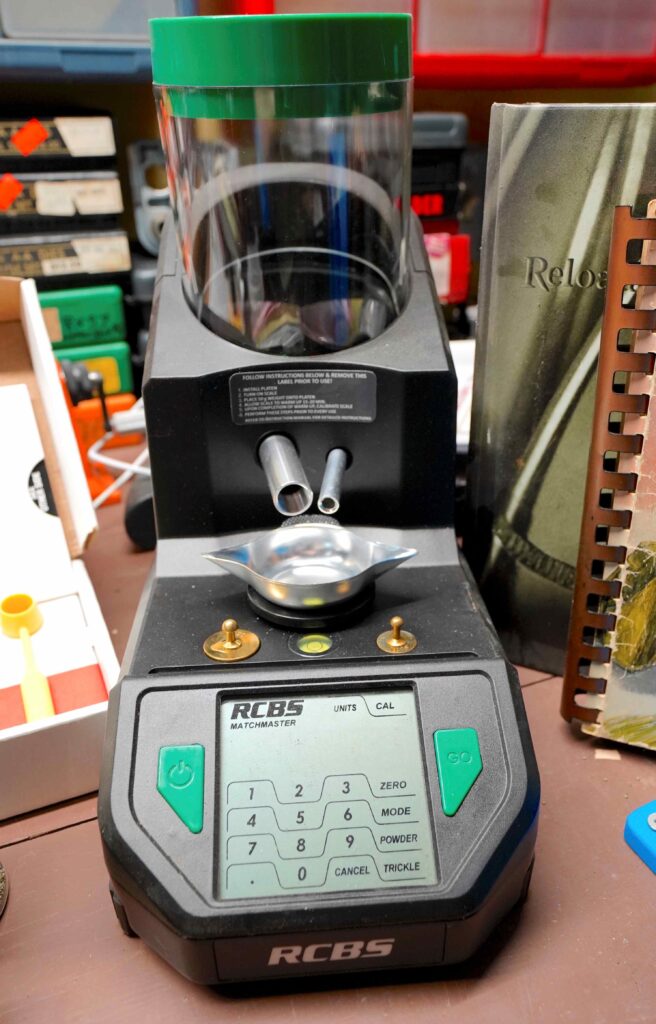
One of the most accurate scales capable of measuring as small as 0.01 grains.
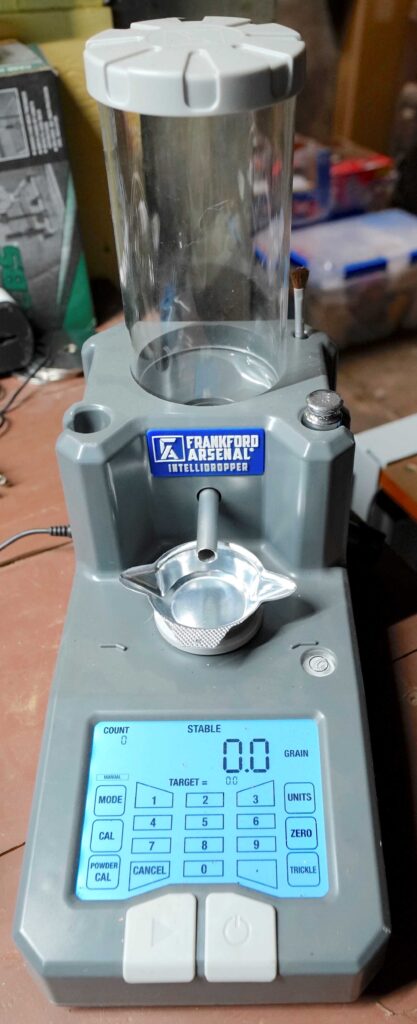
One of the author’s personal favorites, Franklin Intellidropper is a nice compromise between cost and convenience.
The short of it:
The importance of accurate powder measuring first began over a century ago. Today, it’s an essential part of safe reloading. Many more powder accessories are available and those discussed can be utilized to provide relatively safe and accurate grain weights. Prescribing the best measuring device relies wholly on the type of reloading you prefer. Each has shortcomings and benefits. It’s not as simple as getting the best and most expensive piece of equipment. While it is the most accurate, it is slow to use over hundreds or thousands of reloads. Preferably, examine your own needs and budget to find the best fit. Better yet, try a few and share your thoughts!





